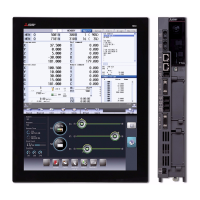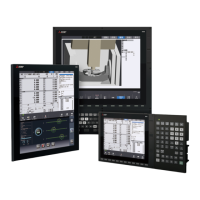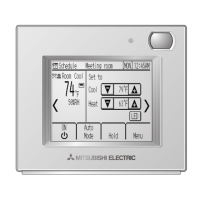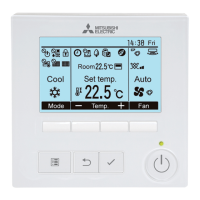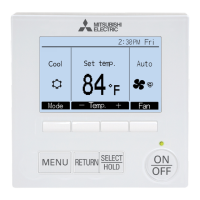Why is my Mitsubishi Electric MDS-EJH-V1 showing overvoltage?
- CchristiansantiagoAug 5, 2025
The overvoltage error in Mitsubishi Electric Control Systems occurs because the bus voltage in the main circuit has exceeded the allowable value.
Why is my Mitsubishi Electric MDS-EJH-V1 showing overvoltage?
The overvoltage error in Mitsubishi Electric Control Systems occurs because the bus voltage in the main circuit has exceeded the allowable value.
Why does my Mitsubishi Electric Control Systems have excessive speed error?
Excessive speed error in Mitsubishi Electric Control Systems means that the difference between the actual speed and the command speed continued for longer than the excessive speed deviation timer setting.
What causes Mitsubishi Electric Control Systems to show grounding error?
A grounding error in Mitsubishi Electric Control Systems indicates that the motor power cable is in contact with FG (Frame Ground).
What causes initial magnetic pole position detection error in Mitsubishi Electric MDS-EJH-V1?
The initial magnetic pole position detection error in Mitsubishi Electric Control Systems occurs when the servo ON has been set before the magnetic pole shift amount is set in the built-in motor which uses the absolute position encoder.
What causes a Mitsubishi Electric Control Systems NC-DRV communication CRC error?
An NC-DRV communication CRC error in Mitsubishi Electric Control Systems means that the data received from the NC was outside the setting range.
What does Mitsubishi Electric Control Systems memory error 1 mean?
Memory error 1 in Mitsubishi Electric Control Systems indicates that a hardware error was detected during the power ON self-check.
What does axis selection error mean in Mitsubishi Electric MDS-EJH-V1?
An axis selection error in Mitsubishi Electric Control Systems means that the axis selection rotary switch has been incorrectly set.
Indicates a potential risk of fatal or serious injuries if handling is mistaken.
Indicates a dangerous situation where fatal or serious injuries may occur if handling is mistaken.
Indicates a dangerous situation that may occur if handling is mistaken, leading to medium or minor injuries, or physical damage.
Describes the safety functions that satisfy harmonized standards and are offered with the drive unit.
A function to remove energy from the motor electronically, not by physically shutting off power.
Enhances brake start reliability by outputting brake start signals redundantly and diagnosing the brake signal output.
Details the necessary parameter settings for the servo drive unit before system startup.
Details the necessary parameter settings for the spindle drive unit before system startup.
Details the environmental conditions, quakeproof level, installation direction, and shaft characteristics for servo motors.
Covers installation procedures for spindle motors, including environmental conditions, shaft characteristics, and balancing.
Explains environmental conditions, installation direction, clearance, and foreign matter prevention for drive units.
Details the connection procedures for servo motors and their encoders, covering various types and configurations.
Explains the wiring methods for servo motor magnetic brakes, including single-axis and multi-axis configurations.
Outlines the steps for adjusting the servo system, including measures against vibration and setup completion.
Covers current loop and speed loop gain adjustments, including lead and delay compensation.
Covers settings for emergency stop, including deceleration control and vertical axis drop prevention.
Details troubleshooting steps for specific alarm numbers detected in the drive unit.
Describes the function to safely decelerate servo axes and spindles during a power failure.
Provides troubleshooting steps for alarms and warnings related to the power backup system.
Describes the protection functions offered by the drive unit, including emergency stop observation.
Explains the double-protection mechanism for emergency stop signals and how it observes abnormalities.
| Protection Class | IP20 |
|---|---|
| Cooling Method | Forced air cooling |
| Pollution Degree | 2 |
| Output Voltage | 3-phase 200V AC |
| Protection Function | Overcurrent, Overvoltage, Undervoltage, Overheat |
| Ambient Temperature | 0°C to 55°C |
| Storage Temperature | -20°C to 65°C |
| Humidity | 5% to 95% (non-condensing) |
| Vibration | 5.9 m/s² or less |





